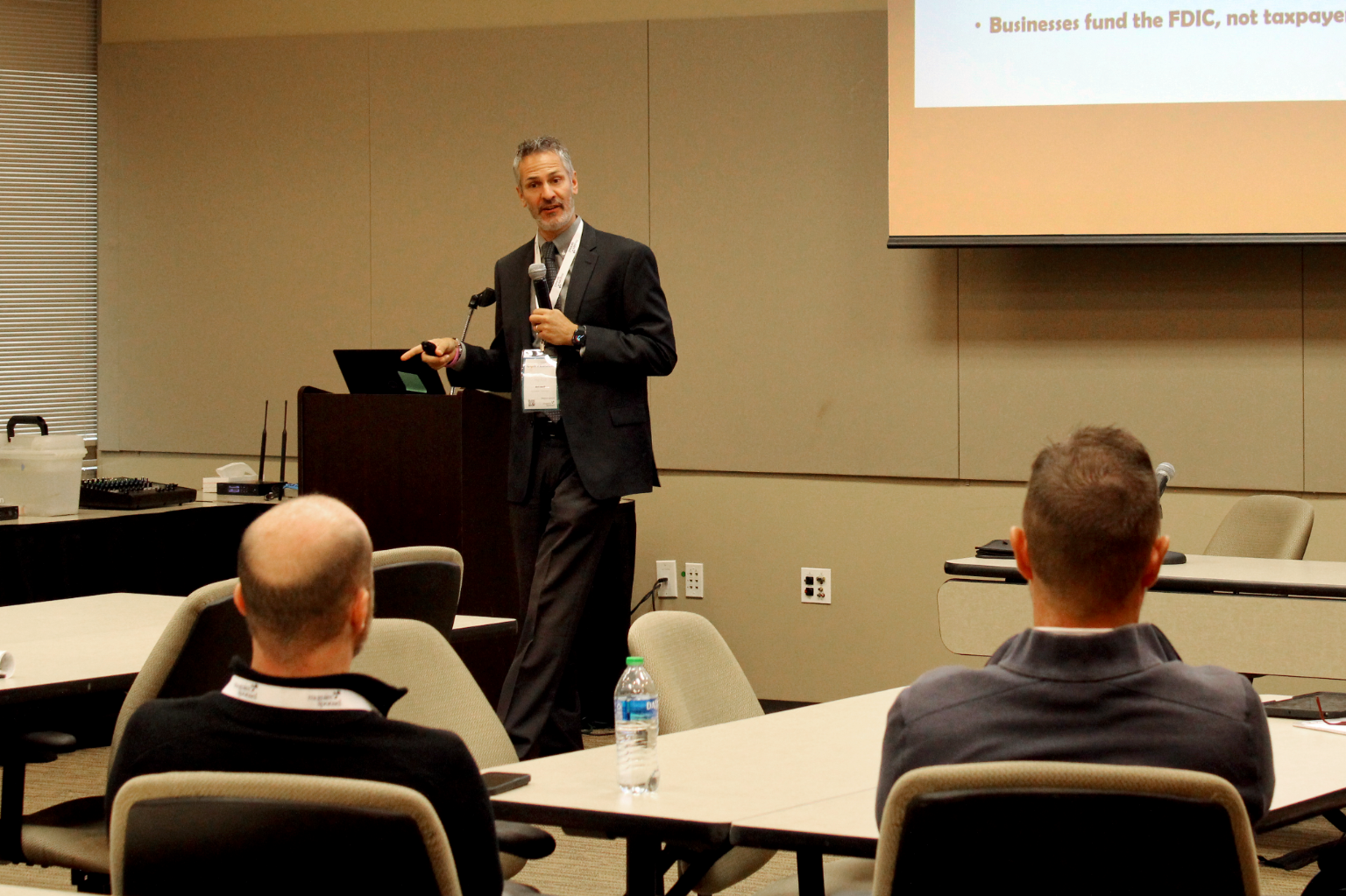The 5 C’s of Credit
January 11, 2024

'by Kevin Herbst
While most people have heard of the 5 Cs of credit, far fewer can name them. This article provides a detailed explanation of what banks mean when they consider the 5 C’s of credit.
Character
There is a reason character is the first “C.” It is absolutely critical to a bank that it lend money only to those businesses whose owners possess good character. When difficult times arise in business, and they always do, character shines through. What this “C” really defines is a willingness to repay debt borrowed, regardless of circumstance.
How, then, can banks learn about the character of a business and its owner prior to beginning a relationship?
Reputation
Most communities, regardless of size, are close-knit. Many companies know each other, either cooperatively or as competitors. Be aware that good bankers will be asking the company’s competitors their opinions. What would they say about you?
In many cases, if banks and bankers are of high quality, the company will already be known prior to them calling on you to win your business. Word of mouth, good or bad, can be obtained relatively easily.
Integrity: Does the company, and management, do what it says it will do within promised deadlines? Does it conduct business with honesty and consistency? Doing so will add to the company’s reputation in a positive way.
References: If someone referred the business to a bank, this works great as a reference. Another way banks can obtain references is through payable and receivable agings. Some banks will have contacts among the company’s customers or suppliers whom they can connect with.
Credit Reports/Background Checks: Many banks will look at two kinds of reports. A personal credit report (and that of an owner’s spouse) will be reviewed, as owners will almost certainly be asked to personally guarantee any debt requested. The credit report will show your history of willingness to repay personal debt. If personal finances are not handled responsibly, it is less likely business finances will be handled responsibly. In addition, banks can see how much personal debt exists, so they can then determine how much money the owner may need to withdraw from the business to maintain a lifestyle. In short, pay bills on time and minimize debt.
Background checks on the owners and company will let the bank know if there have been legal actions against the above, and how many. Be honest and open about anything that might be negative – hiding something, and having the bank learn about it later, will guarantee a rejection of any request.
Intangibles
Every bank, and banker, will have other key things they look for. The initial meetings are a “feeling out” process to determine the strength and capability of the owner, how well they understand the business, and whether any red flags are raised. Bank lending is much more art than science, and at times a good company could be rejected, or a company with challenges could be approved, based on non-scientific information gathered during the underwriting process.
This could be anything from the look and feel of the contractor’s facility to the non-verbal signals of the business owner. While these factors are not concrete, it is worth including them because it is a real form of character evaluation, one all of us use in our daily lives.
Capacity
If character is the willingness to repay, capacity is the ability to repay. There are a variety of things banks look at to make this determination:
Repayment History
Banks look at financial statements to determine if other debts have been repaid satisfactorily. If a company, or an owner, has had collection actions, judgments, foreclosures, short sales or bankruptcies, it shows that repayment of the debt is not a sure thing, and approval of any debt is much less likely. Be aware that many banks will not lend to companies whose owners have dealt losses to the banking industry in the form of foreclosures and short sales on personal real estate.
Cash Flow Generation
This is a critical piece of bank underwriting. In this analysis, the bank is looking to determine if the company generates enough cash to make its payments.
The calculation typically works as follows, though each bank may have small variations:
The bank determines annual Earnings Before Interest, Taxes, Depreciation and Amortization (EBITDA). This is the sum of net income, interest expense, taxes, depreciation and amortization.
The bank subtracts distributions for taxes or for bonuses. This can be confusing, but note that any additional funds withdrawn from the company over and above tax payments reduces the amount of cash available for debt payments. In many cases, excessive distributions are a key reason why banks reject requests, even if the company is otherwise profitable. It is critical that distributions from the company are less than net income if you seek to borrow money from a bank.
The bank adds up all annual debt payments.
The cash available (EBITDA minus distributions) is divided by the debt payments to obtain a number. This number must be at least 1.0, which means that every dollar earned by the company was used for debt payments. If the number was less than 1.0, the company had to use its cash reserves to make payments, which cannot go on indefinitely. Most banks will have a minimum requirement, typically anywhere from 1.10 to 1.50, so there is some wiggle room for other cash needs. Expect that, if this number is consistently less than 1.20 over the past few years, obtaining a bank loan will be very difficult unless there are extenuating circumstances.
Minimizing Leverage
Banks will look at a company’s leverage to determine whether it has good prospects of repaying any debt approved.
Leverage is typically defined by banks with a ratio called “debt-to-tangible-net-worth.” This calculation is performed by taking total debt and dividing by net worth – simple as that. The lower the number, the better, but typically banks want to see a number no higher than 3.0. If the owner or other parties have lent the company money, that debt could be subordinated to the bank, and most banks will consider it equity for the purposes of the calculation.

Also note that this is tangible net worth. Goodwill and other intangibles, such as deposits or monies owed the company by affiliates, are not included as assets for this calculation.
Liquidity
Cash is king. When a company runs out of cash, it must close the doors. Banks want to see that a company has adequate working capital, and this means cash on the balance sheet. Receivables are typically 90 days or less away from cash, and so have some value as collateral. Inventory is typically even further away from being turned into cash, and so it has less value than receivables as collateral.
Collateral
Collateral is what the bank uses if things go wrong, and the company is unable to repay the monies lent. In the case of a real estate loan, it means foreclosing on the real estate. In the case of an equipment loan, it means selling the equipment. In the case of a line of credit, it means collecting receivables and selling inventory.
The above is easier said than done. In the case of real estate, the last 15 years have shown that values can plummet. As a result, even in situations where the bank only lends 75% initially, there could still be a shortfall. In most cases, companies go out of business during difficult economic times, so equipment is typically depressed in value. Receivables and inventory are very hard to collect, as many customers will claim monies are not owed. Banks are not nearly as good as borrowers are at collecting a company’s receivables.
It is critical to understand that these shortfalls happen consistently – that is the reason banks will not lend higher percentages than what is seen. In reality, to be truly secure, eligible receivables should probably be closer to 25%, inventory 5%, and equipment and real estate 50%.
Capital
Capital covers the company’s contribution to the asset being financed. To increase the chances of approval, banks want to see “skin in the game.” It is important to the bank not to bear responsibility for the entire burden of an asset purchase – the company should have a stake in the successful use of the asset as well.
For that reason, a down payment is always beneficial. The higher the down payment, the higher the likelihood of approval of the loan request.
Conditions
This is the “C” of credit that is least under the control of the company. Banks lend based on the current macroeconomic conditions. If nearly every company in a particular industry is failing, it will be difficult for a business in that industry to look for a loan. Conversely, if a segment is going strong, that gives any company in that industry an extra boost of support.
The capability of management, however, is under the company’s control, and is a key determinant from the bank’s perspective. Strong management can outperform in difficult times, while weak management can underperform in good times. Economic performance in the last few years is a great gauge of the capabilities of management. Can the company show profits in difficult years? If yes, the company is more likely to repay its debts.
Conditions can also include the structure of the loan, such as length of term, interest rate and personal guarantees, among other things.
Conclusion
Very rarely does one of the C’s determine approval or decline. They are typically judged as a whole. Imagine a 1950s computer with dozens of buttons and levers. Pushing one button, or pulling one lever, will not make the bank’s decision, but it will impact all the other buttons or levers. If one area is weak, there must be very strong areas to mitigate the risk the bank is taking.
The key to the 5 C’s is to understand that they describe the framework that a bank uses to approve, or decline, a loan request.
Kevin Herbst is senior vice president and team lead of commercial banking at Bell Bank. He has worked in banking since the late 1990s, with much of that time focused on construction, contracting, nonprofits and aviation.
